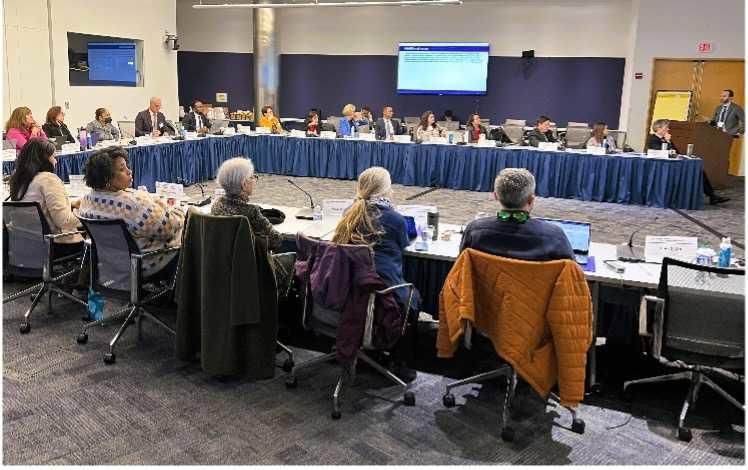Meeting 3 Recap: Policy Considerations at the Intersection of Technology and Patient Navigation
Join us on X (Twitter) by following @PresCancerPanel, and connect with us on LinkedIn.
On December 7, 2023, the President’s Cancer Panel held the third of three public meetings on cancer patient navigation and technology. Patient navigation is an evidence-based, person-centered healthcare delivery model that aims to help every cancer patient access timely and quality care. Health technologies could transform patient navigation; however, these tools must be thoughtfully designed and implemented to make sure they are accurate and useful and to avoid making existing health disparities worse.
The first meeting in the series, held October 17, included presentations from patient navigation experts and discussions of the state of the field. The second meeting, held November 2–3, focused on how to harness technology to improve patient care without increasing the burden on patients, providers, and navigators. Ideas and topics from those meetings led into the discussion at the December meeting, which focused on policy opportunities to advance the use of technology in patient navigation.
Themes and priorities from this meeting included:
- Using existing policies that apply to the use of technology for cancer patient navigation
- Creating new policies to ensure patients’ privacy is protected when technologies are used for navigation
- Developing infrastructure to enable widespread access to patient navigation technologies
- Balancing promoting innovation with establishing standards
- Providing coverage and reimbursement for technologies used for navigation
New technologies are being developed and adopted by consumers in all sectors of society, including technologies for patient navigation. Participants agreed that approaches are needed—including through policy—to ensure that new navigation tools are appropriately used and patients are protected. One danger of new technologies is that they will perpetuate bias and widen health disparities. Eliminating bias from data or algorithms is impossible, but appropriate policies can require or encourage practices that help identify and mitigate bias. For example, tools could be validated in different settings, data and algorithms could be shared, and developers could be required to show how they are addressing bias. Participants also stated that communities, including patients and providers, should be involved early and throughout the development and deployment of technologies, so that new tools are designed to meet their needs.
In addition to bias, lack of access to high-speed internet and devices can contribute to health disparities. Although there are federal programs that facilitate access, awareness of these programs could be improved. Digital navigators—people who help others with technology—may be a way to ensure that patients can access and use programs and tools.
Some participants emphasized the need for updated policies to protect patients’ privacy. Currently, privacy issues are covered by a combination of federal laws, as well as laws that vary by state. A comprehensive federal privacy law could help address gaps and also make compliance easier.
The emerging state of technologies for navigation offers an opportunity for policy to set standards and requirements. Participants suggested that new navigation technologies be integrated with electronic health records. Ensuring that data are standardized and interoperable could help avoid a patchwork of systems that cannot share information. Also, policies that mandate or strongly encourage collection of data relevant to navigation—such as social determinants of health data—could support development of new tools to facilitate effective navigation.
Finally, the group discussed a new rule that allows the Centers for Medicare & Medicaid Services (CMS) to pay for navigation services for cancer and other serious conditions. Although CMS reimburses for services provided to patients and not for technology upgrades, this policy may make it easier for health care systems to invest in technology infrastructure and engage community-based organizations in navigation.
The presentations and discussions in all three meetings in this series will inform the Panel’s recommendations, which will be included in a report to the President of the United States. A recording of the December meeting is available now on the President’s Cancer Panel website. The meeting summary will be available there in early 2024.
